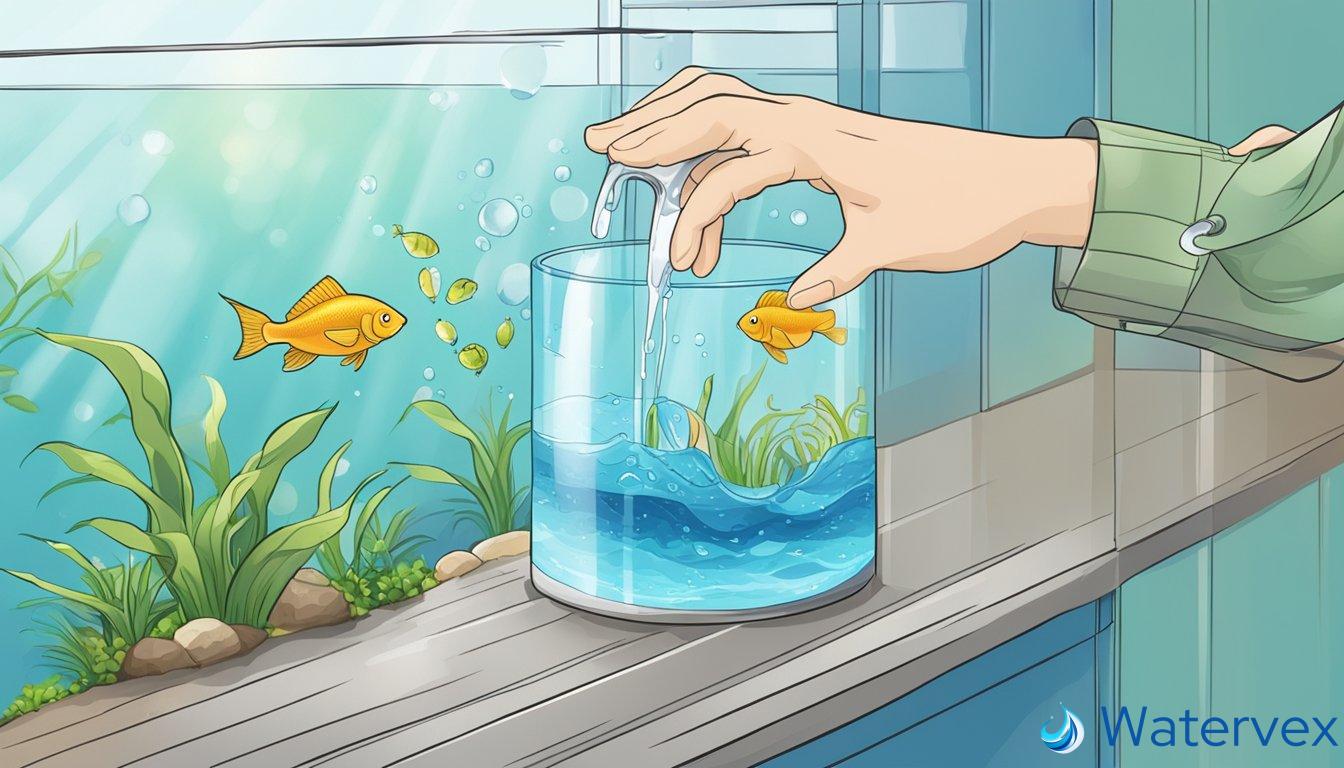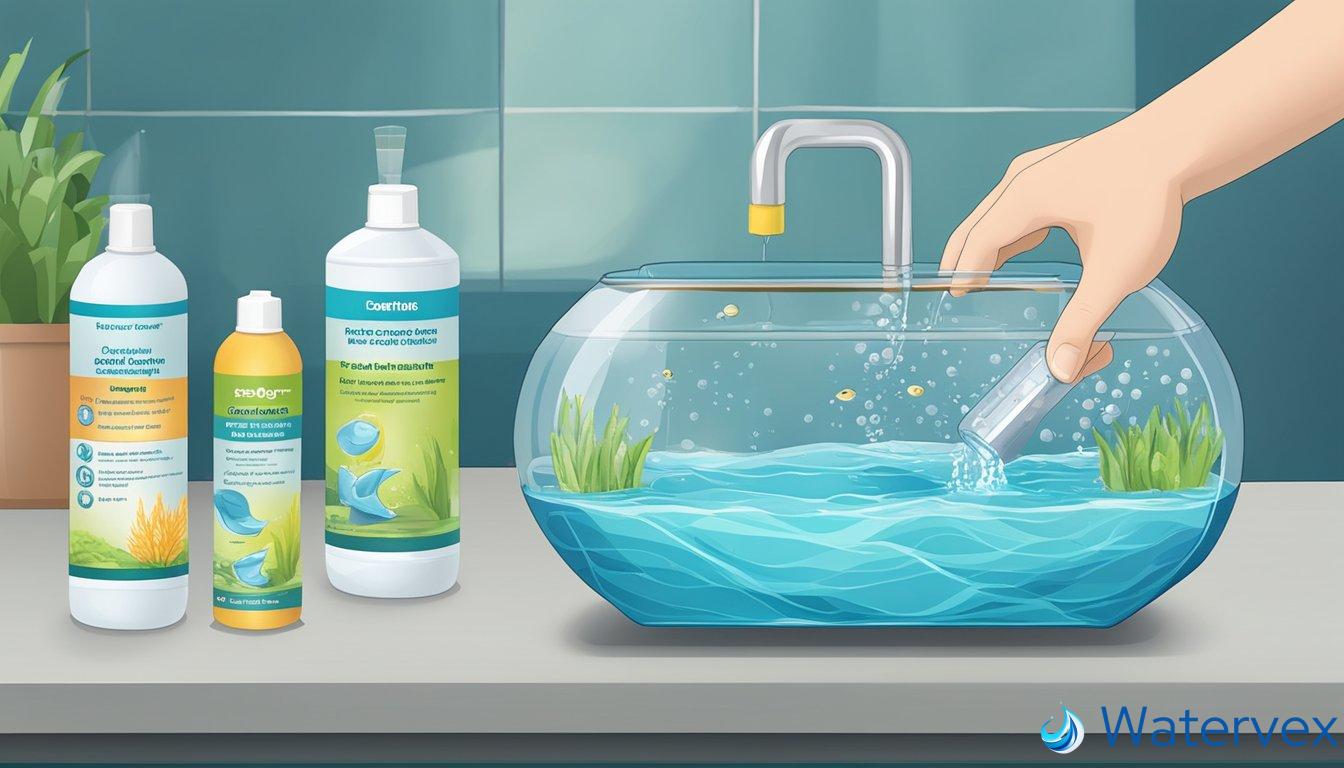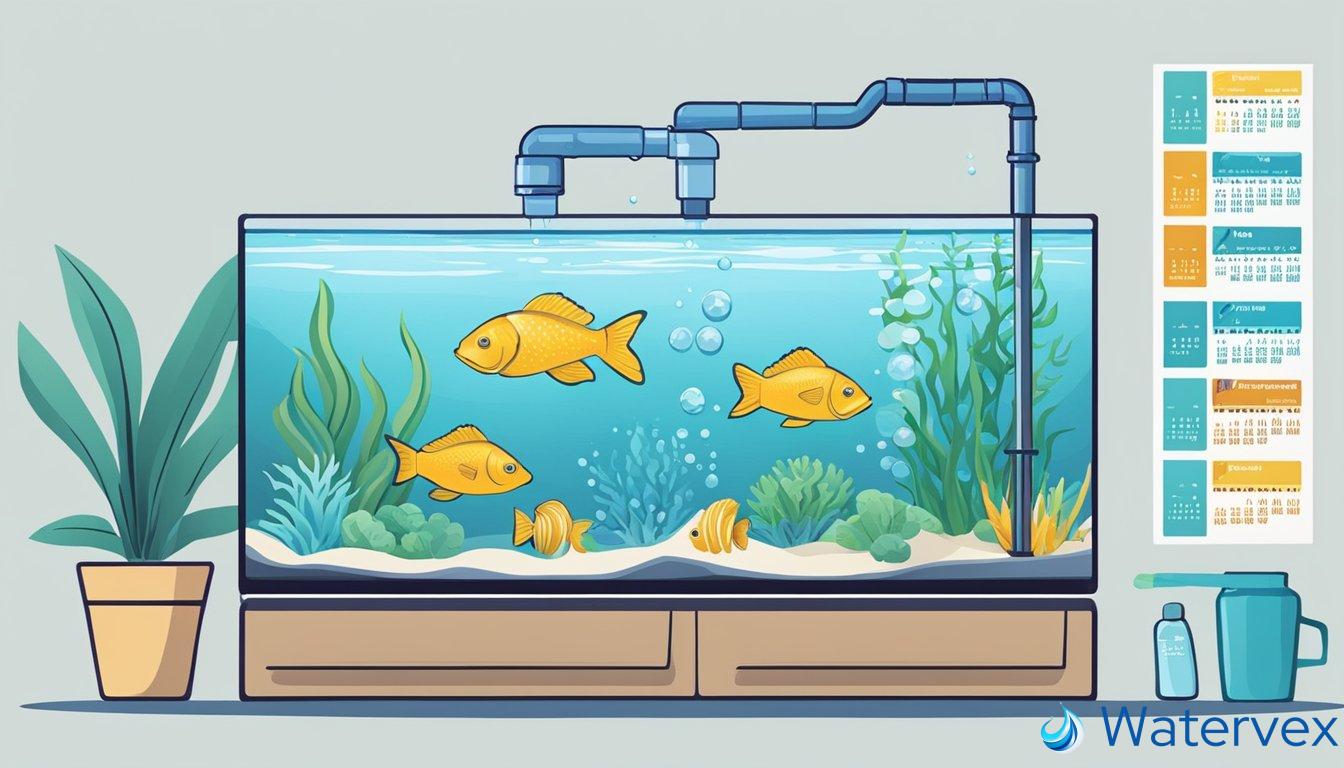Maintaining the right quality of water in your aquarium is crucial for the health of your aquatic friends, whether they be tropical, marine, or coldwater species. Using a water conditioner, like the ones provided by Aqua One, is an essential part of the aquarium setup process. When you fill your tank for the first time, or when you’re changing the water, tap water can introduce harmful elements like chlorine and chloramines, which are detrimental to your fish. A water conditioner neutralizes these threats, making the water safe for aquarium life.

Understanding how to properly use the Aqua One Water Conditioner is imperative for effective aquatic care. When you’re preparing to add water to your aquarium, follow the set up instructions to ensure that the water conditioner is distributed evenly throughout the tank. Precise dosage according to the volume of water in your aquarium ensures optimal conditions for your fish. Moreover, it’s not just about the initial application; maintaining a regular schedule for reapplying the water conditioner according to the guidelines is important for ongoing aquatic health.
Key Takeaways
- Water conditioners protect fish by eliminating harmful tap water elements.
- Follow specific instructions for dosage and water distribution.
- Establish a regular maintenance schedule for water conditioner application.
Setting Up Your Aqua One Water Conditioner
When preparing to use your Aqua One Water Conditioner, begin by organizing your aquarium cabinet and ensuring your tank is properly positioned. This is crucial for the maintenance routine you will establish later. Begin by adding gravel to form a stable base, and proceed with placing the desired decorations and live plants. The aesthetic setup is key as it pertains to creating a natural environment for your fish.
Before filling the tank with water, read the manual thoroughly. It details important safety precautions to observe, as well as specific maintenance advice for various series, such as the AquaStyle 850 or the AquaReef.
Your filter setup is the next step. Fit the intake pipe and spray bar as directed, making sure the mechanical/chemical filtration system, including the carbon cartridge, is in place. This keeps the water clear and free from impurities.
Heaters and LED lighting, as per your aquarium’s specifications, should now be installed. A stable temperature is important for the wellbeing of your fish, and appropriate lighting will showcase your tank’s interior while supporting the health of your live plants.
Next, begin to fill the tank with tap water. Once filled, apply the Aqua One Water Conditioner to treat the new water. This product is designed to safely neutralize harmful chemicals like chlorine, making the water safe for your fish. The conditioners typically offer instructions, like those for the Aquastyle series, on the quantity required per liter of water in your tank.
After treating the water, switch on the filter to integrate the Aqua One Water Conditioner throughout the tank efficiently. Ensure the water flow is stable, which you can check by observing the movement in the spray bar.
Regular tank maintenance will include the use of algae scrapers and occasional replacement of filter media within your mechanical/chemical filtration system. Keep an eye on water parameters to ensure a healthy environment, adjusting the conditioner application as needed during water changes.
Remember, these initial steps lay the groundwork for a thriving aquatic ecosystem in your home.
Dosage and Distribution Techniques

When using Aqua One water conditioner, it’s crucial to calculate the exact dosage based on your aquarium size. Typically, you’ll find specific guidance on the bottle, but as a general rule, it’s about 5 ml per 10 liters of water. It’s essential to dose accurately to ensure the optimum balance for your fish’s environment.
First, you should remove chlorine and chloramine from your tap water, which are harmful to fish. Add the prescribed amount of conditioner to your tank during the setup stage and each time you change the water. By doing so, you’re instantly detoxifying heavy metals and other harmful toxins.
An added benefit of the conditioner is that it helps to maintain stable pH levels, supporting overall fish health. A few drops go a long way in preserving the fish’s natural protective slime coating, which is their first line of defense against diseases.
- Measure: Use the cap of the bottle or a syringe for precise measurement.
- Mix: Always mix the conditioner in a separate container with some tank water before adding it to the aquarium.
- Distribute: Pour the mixed solution evenly around the aquarium to avoid concentrated areas.
For specific problems such as cloudy water or high ammonia levels, you might need a product like Aqua One Bio Start. This additive kickstarts the biological filtration system, which is important when you build stock levels in your new tank.
If you’re facing issues, follow these troubleshooting tips:
- Check if the dosage was appropriate for the volume of water.
- Verify if the product is within its expiration date.
- Ensure thorough mixing and even distribution within the tank.
Remember, the right dose and distribution technique of your water conditioner are vital for a thriving aquatic environment.
Maintenance and Reapplication Schedules

When it comes to maintaining a healthy environment in your aquarium, regularly using a water conditioner like Aqua One is crucial. This key step ensures that harmful toxins such as chlorine are neutralized, which is vital for the wellbeing of your fish.
Weekly Maintenance:
- Check water temperature: Ensure it’s within the safe range for your fish.
- Examine water flow: Confirm that filters are running properly.
- Monitor fish health: Look for signs of stress or illness.
Monthly Maintenance:
- Filter Maintenance: Clean or replace filter media as recommended in your Aqua One filter manual.
- Algae Control: Use an Aqua One 4 in 1 algae scraper to maintain clear tank walls.
- Water Conditioner Reapplication:
- After any water change, treat new water with Aqua One Water Conditioner.
- Use the recommended dosage per liter as indicated on the bottle or within the product’s instruction manual.
Bi-annual Checkup:
- Equipment Inspection: Look for signs of wear or malfunction in your tank’s heating and filtration systems.
- Safety Precautions: Ensure all electrical equipment is functioning safely to prevent accidents.
Troubleshooting Tips:
- If you notice a sudden change in water clarity or fish behavior, reapply water conditioner following the instructions provided and seek further advice if the problem persists.
- For persistent algae problems, considering adding a bio starter culture to rebalance the ecosystem in your tank.
Note:
Always keep the instruction manual handy for specific troubleshooting advice as per your model and setup.
Remember, the key to a thriving aquarium lies in persistent and careful attention to maintenance schedules. Your diligence pays off in the vibrant health of your aquatic friends!

